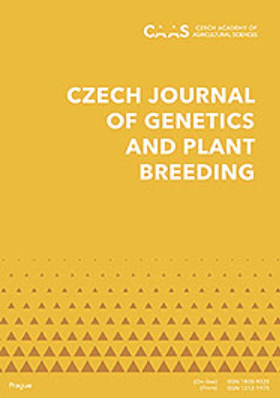Overexpression of Arabidopsis H+-pyrophosphatase improves the growth of alfalfa under long-term salinity, drought conditions and phosphate deficiency
IF 1.8
4区 农林科学
Q3 AGRONOMY
引用次数: 8
Abstract
Alfalfa planting is threatened by limited arable land, salinization, water shortage, and soil nutrient deprivation. To deal with this challenge, we previously introduced the Arabidopsis type I H+-pyrophosphatase gene AVP1 into alfalfa and found that transgenic lines exhibited enhanced tolerance to short-term salinity or drought. In this study, the growth performances of two transgenic lines were further investigated under long-term salinity or drought conditions, as well as under phosphate deficiency (low-Pi). Compared with wild-type (WT) plants, the transgenic alfalfa showed better growth performance with taller plants and more biomass accumulation after being treated with either long-term salinity, long-term drought, or low-Pi. Most importantly, the overexpression of AVP1 significantly increased the root dry weight and the root/shoot ratio of transgenic alfalfa. A more robust root system facilitates the transgenic alfalfa to absorb nutrients, and in turn promotes the growth of the plants. Whether being treated with low-Pi or not, transgenic plants showed higher total phosphorus concentrations by 16.5–35.5% than WT plants. This study laid a foundation for breeding alfalfa cultivars adapted to saline, arid and nutrient-deprived marginal land.拟南芥H+-焦磷酸酶的过表达改善了苜蓿在长期盐碱、干旱和缺磷条件下的生长
苜蓿种植受到耕地有限、盐碱化、缺水和土壤养分缺乏的威胁。为了应对这一挑战,我们之前将拟南芥I型H+-焦磷酸酶基因AVP1引入苜蓿中,并发现转基因系对短期盐度或干旱表现出更强的耐受性。在本研究中,进一步研究了两个转基因系在长期盐度或干旱条件下以及在缺磷(低Pi)条件下的生长性能。与野生型(WT)植物相比,转基因苜蓿在长期盐度、长期干旱或低Pi处理后表现出更好的生长性能,植株更高,生物量积累更多。最重要的是,AVP1的过表达显著增加了转基因苜蓿的根干重和根冠比。更强健的根系有助于转基因苜蓿吸收营养,进而促进植物的生长。无论是否用低Pi处理,转基因植物的总磷浓度都比野生型植物高16.5-35.5%。该研究为培育适应盐碱、干旱和营养缺乏的边缘土地的苜蓿品种奠定了基础。
本文章由计算机程序翻译,如有差异,请以英文原文为准。
求助全文
约1分钟内获得全文
求助全文
来源期刊

Czech Journal of Genetics and Plant Breeding
Agricultural and Biological Sciences-Plant Science
CiteScore
2.20
自引率
0.00%
发文量
25
审稿时长
>12 weeks
期刊介绍:
Original scientific papers, critical reviews articles and short communications from the field of theoretical and applied plant genetics, plant biotechnology and plant breeding. Papers are published in English.
 求助内容:
求助内容: 应助结果提醒方式:
应助结果提醒方式:


